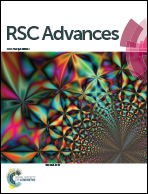Effect of fixed carbon molecular sieve (CMS) loading and various di-ethanolamine (DEA) concentrations on the performance of a mixed matrix membrane for CO2/CH4 separation
Abstract
Polyethersulfone (PES) as a polymer along with carbon molecular sieves (CMS) as an inorganic filler and di-ethanolamine (DEA) as the third component were used to fabricate amine mixed matrix membranes (A3Ms). The CMS and the developed membranes were characterized by variable pressure field emission scanning electron microscopy (VPFESEM) and thermal gravimetric analysis (TGA). FESEM micrographs showed that with the addition of DEA, uniform distribution of CMS particles in the PES matrix was achieved with good polymer-filler contact. The combined effect of DEA concentration (5–15 wt%), feed pressure (2–10 bar) and CMS loading on the CO2/CH4 transport properties of the PES–CMS–DEA membranes were studied. The results revealed that the PES–CMS–DEA (15 wt% DEA) membrane showed a CO2 permeance of 123.49 GPU at 2 bar, which is more than a threefold increment with respect to the native PES membrane. The corresponding CO2/CH4 ideal selectivity was increased from 5.40 for PES to 51.39 for PES–CMS–DEA (15 wt% DEA). The CO2 permeance of the PES–CMS–DEA (A3Ms) membranes was higher than PES membranes over the operating pressure range.


 Please wait while we load your content...
Please wait while we load your content...